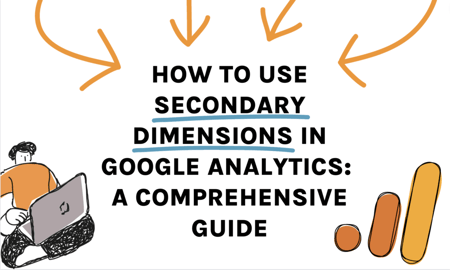The Power of Secondary Dimensions in SEO: Maximizing Your Insights
The Power of Secondary Dimensions in SEO: Maximizing Your Insights
Blog Article
Transform Your Information Comprehending With Second Dimensions
Exploring data through the lens of secondary measurements opens a world of untapped understandings, using a much more nuanced point of view on the details of your dataset. By untangling the layers beneath the surface metrics, you can reveal patterns and partnerships that may have otherwise gone undetected, leading the way for notified decision-making and strategic optimizations. This strategic application of additional dimensions not just improves your data understanding however also offers as a driver for unlocking the full possibility of your analytics ventures.
Benefits of Additional Dimensions

By layering additional measurements onto existing information, companies can assess the effect of numerous elements on crucial metrics, helping them make even more enlightened choices. Generally, the application of secondary measurements leads to extra insightful and robust information evaluation, equipping services to drive tactical activities based on a much deeper understanding of their data.

How to Implement Additional Dimensions
To successfully execute secondary measurements in data evaluation, services ought to initially identify crucial variables that align with their logical goals and purposes. This includes figuring out the certain metrics and measurements that are most relevant to the insights they seek to acquire from the data. Once these crucial variables are determined, organizations can then pick the proper secondary measurements to enhance their evaluation better. It is important to consider exactly how these second measurements will offer added context and deepness to the key information being examined.

Studying Information With Secondary Dimensions
Making use of second dimensions in information evaluation boosts the deepness and context of understandings obtained from key data. By including second measurements into your analysis, you can obtain an extra detailed understanding of the partnerships and patterns within your data. This procedure involves checking out the key data through different lenses or point of views, which can disclose concealed connections or fads that might not be quickly apparent when assessing the data utilizing just primary dimensions.
Examining data with secondary measurements enables you to sector and team your information in numerous ways, offering a more nuanced sight of your dataset. secondary dimensions. This division can aid you recognize specific aspects that might be my sources affecting the end results you are studying. By drilling down into the data making use of secondary dimensions, you can discover valuable insights that can direct decision-making and strategy advancement
Best Practices for Second Measurements
When integrating secondary measurements right into information analysis, precision in specifying the dimensions is important for extracting meaningful understandings. It is essential to choose additional measurements that enhance the primary information properly.
One more ideal technique is to stay clear of redundancy in dimensions. Guarantee that the secondary measurements include new point of views or information to the evaluation, as opposed to replicating details currently existing in the main dimensions. This will certainly help prevent confusion and simplify the interpretation of the information.
Furthermore, it is very important to take into consideration the scalability of the analysis when picking second measurements. Pick measurements that can be quickly broadened or adjusted as required to suit future information demands or modifications in analytical focus. By following these best techniques, experts can make the most of the value of secondary dimensions in information evaluation and gain deeper insights into their click this datasets.
Making Best Use Of Insights With Additional Dimensions
Integrating additional dimensions purposefully boosts data analysis by giving a deeper understanding of the relationships within the dataset (secondary dimensions). By making the most of understandings with secondary measurements, analysts can reveal useful patterns, fads, and dependencies that might not be instantly evident when taking a look at the data via key measurements alone
One key benefit of utilizing second dimensions is the capability to segment and filter information a lot more specifically. This segmentation enables for a more granular evaluation of specific parts within the dataset, making it possible for analysts to recognize correlations and causations that could have otherwise been ignored.
Moreover, additional measurements can help in contextualizing key data points by including layers of information that use an even more comprehensive view of the information. This contextualization is important for making informed decisions based upon a holistic understanding of the dataset.
Final Thought
To conclude, integrating additional measurements in data analysis procedures uses a more nuanced and thorough understanding of details, causing boosted insights and critical decision-making. By integrating extra variables that align with have a peek at these guys analytical goals, concealed patterns and connections can be disclosed, providing a more comprehensive and contextualized view of information. This strategy maximizes the potential for optimization and reveals brand-new possibilities within procedures.
In general, the use of additional dimensions leads to much more robust and insightful data analysis, encouraging businesses to drive strategic actions based on a much deeper understanding of their information.
Making use of second measurements in information analysis enhances the depth and context of understandings acquired from primary information.Analyzing information with second measurements enables you to section and group your data in various methods, offering a much more nuanced view of your dataset.When incorporating second measurements right into data analysis, accuracy in defining the dimensions is vital for drawing out meaningful understandings. Ensure that the second measurements add brand-new viewpoints or information to the analysis, rather than duplicating details already existing in the main dimensions.
Report this page